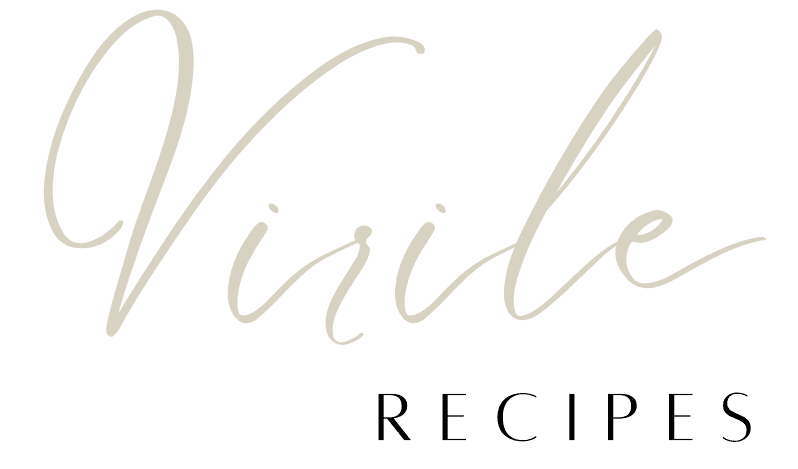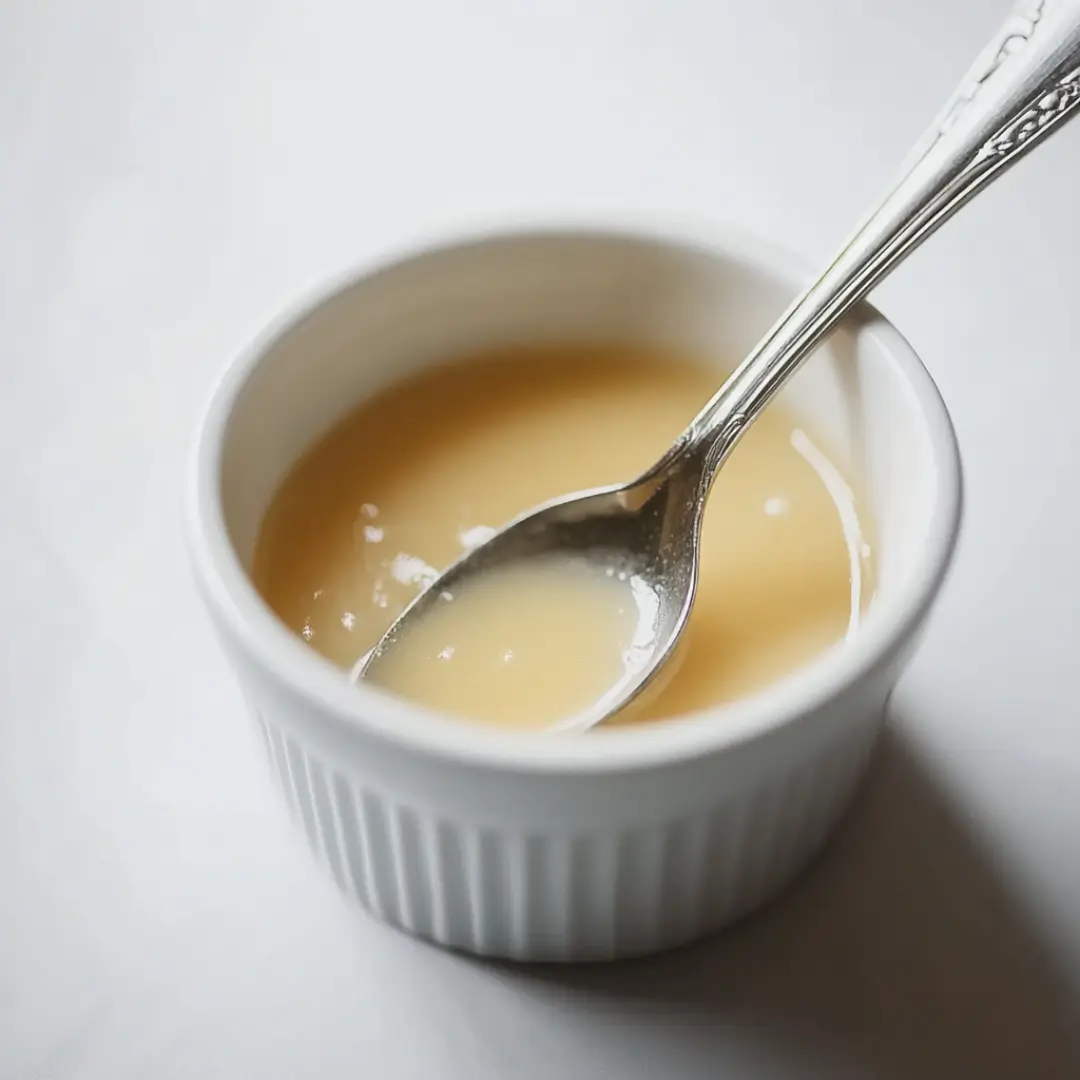If you’ve ever wondered what makes mousse cakes irresistibly creamy, marshmallows perfectly chewy, or panna cotta hold its delicate wobble, the answer is gelatin powder. This versatile gelling agent plays a crucial role in both sweet and savory recipes, giving structure to everything from desserts to broths.
But let’s be real—working with gelatin can sometimes feel like a science experiment gone wrong. Why isn’t my gelatin setting? Why is it lumpy? Can I use a substitute? If you’ve ever asked these questions, don’t worry, this guide will explain everything you need to know.
We’ll explore what gelatin powder is, how it works, and the best ways to use it while avoiding common mistakes. Plus, we’ll walk through an incredible chocolate peppermint mousse cake recipe that uses gelatin to achieve silky layers of chocolate and peppermint perfection.
What is Gelatin Powder
Gelatin powder is a protein-based gelling agent derived from animal collagen. It is widely used in both sweet and savory dishes to create smooth textures, thicken liquids, and provide stability to desserts. Unlike starch-based thickeners, gelatin forms a firm yet delicate gel that melts in the mouth, making it essential for recipes like mousses, panna cotta, marshmallows, and even gummy candies.
This ingredient comes in different forms, with the most common being powdered gelatin and sheet gelatin. Powdered gelatin is easy to measure and dissolves quickly when bloomed in water, while gelatin sheets provide a more refined texture but require soaking before use. Both types work similarly, but the choice between them often depends on the recipe and personal preference.
Gelatin powder is available in different grades, including food-grade gelatin for general cooking and high-quality options like grass-fed gelatin or organic gelatin for those who prefer a cleaner source. It is naturally flavorless and odorless, allowing it to blend seamlessly into various recipes without affecting the taste.
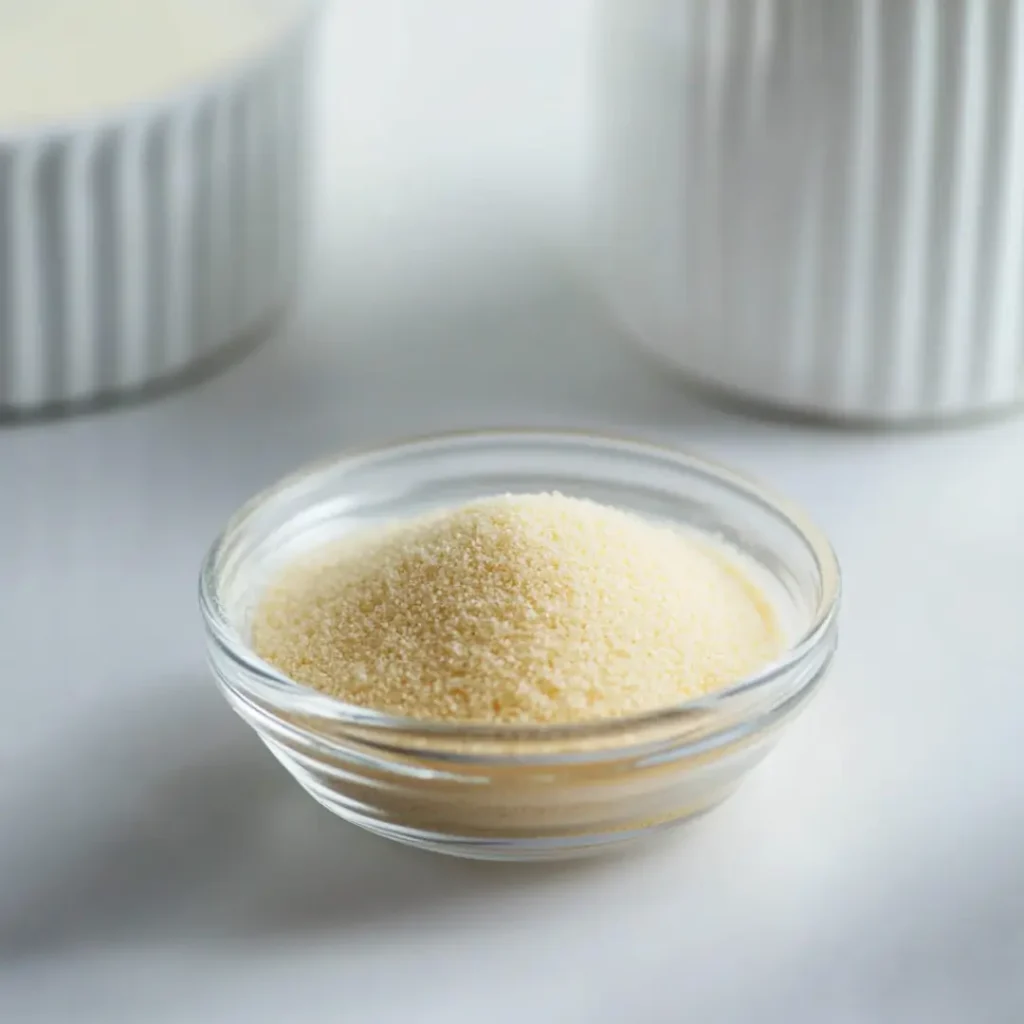
For those following dietary restrictions, there are alternative gelling agents such as agar agar, pectin, and carrageenan, which can mimic some of the properties of gelatin. However, these substitutes do not always behave the same way, so adjustments in recipes may be necessary.
How Gelatin Powder Works in Recipes
Gelatin powder works by absorbing liquid and forming a gel-like structure when cooled. This process, known as gelatin hydration, is what gives mousse its airy texture, panna cotta its signature wobble, and gummy candies their chewiness. Understanding how gelatin behaves at different temperatures is key to getting the perfect consistency in your recipes.
When sprinkled over cold water, gelatin powder absorbs moisture and swells, a process called blooming. This step is crucial because it ensures the gelatin dissolves evenly without forming lumps. Once bloomed, the gelatin must be gently heated to fully dissolve before being added to a recipe. It’s important to avoid overheating, as gelatin loses its ability to set if boiled.
The setting process begins as the mixture cools. Gelatin typically starts to firm up at room temperature but requires refrigeration to reach its full strength. The final texture depends on factors like gelatin concentration, sugar content, and acidity levels. A higher gelatin ratio creates a firmer set, while more liquid results in a softer consistency.
One common issue with gelatin powder is improper mixing, which can lead to clumps or an uneven set. To prevent this, always ensure the gelatin is fully dissolved before incorporating it into a recipe. If the mixture is too hot, the gelatin may break down, preventing it from setting properly. If it’s too cold, the gelatin might form unwanted lumps.
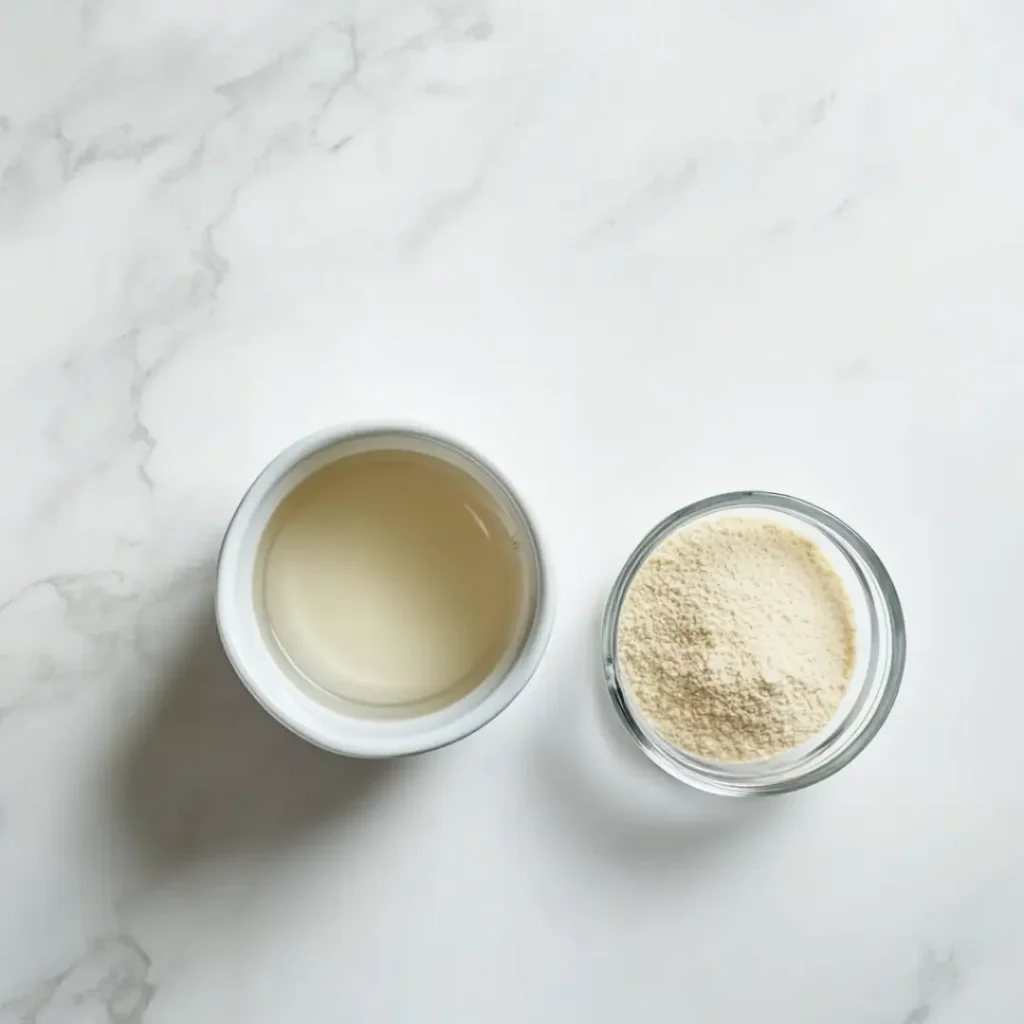
Gelatin powder is incredibly versatile and can be used in a wide range of recipes, from stabilizing whipped cream to creating silky smooth layers in a chocolate peppermint mousse cake.
How to Bloom Gelatin Powder Properly
Blooming gelatin powder is a crucial step that ensures it dissolves evenly and creates a smooth, lump-free texture in recipes. Skipping or incorrectly blooming gelatin can lead to grainy textures, uneven setting, or gelatin that simply won’t work as expected.
To properly bloom gelatin powder, follow these steps:
- Measure the liquid – Use cold water, milk, or any other liquid required in your recipe. The typical ratio is 1 tablespoon of gelatin powder to ¼ cup of cold liquid.
- Sprinkle the gelatin evenly – Instead of dumping the gelatin into the liquid all at once, sprinkle it evenly over the surface. This prevents clumping and ensures all the gelatin granules absorb moisture.
- Let it sit – Allow the mixture to rest undisturbed for 5 to 10 minutes. During this time, the gelatin will swell and absorb the liquid, forming a thick, rubbery texture.
- Heat gently to dissolve – Once bloomed, the gelatin must be dissolved before use. Heat the mixture over low heat, stirring constantly until the gelatin is fully melted. Avoid boiling, as excessive heat can break down gelatin’s structure and prevent it from setting properly.
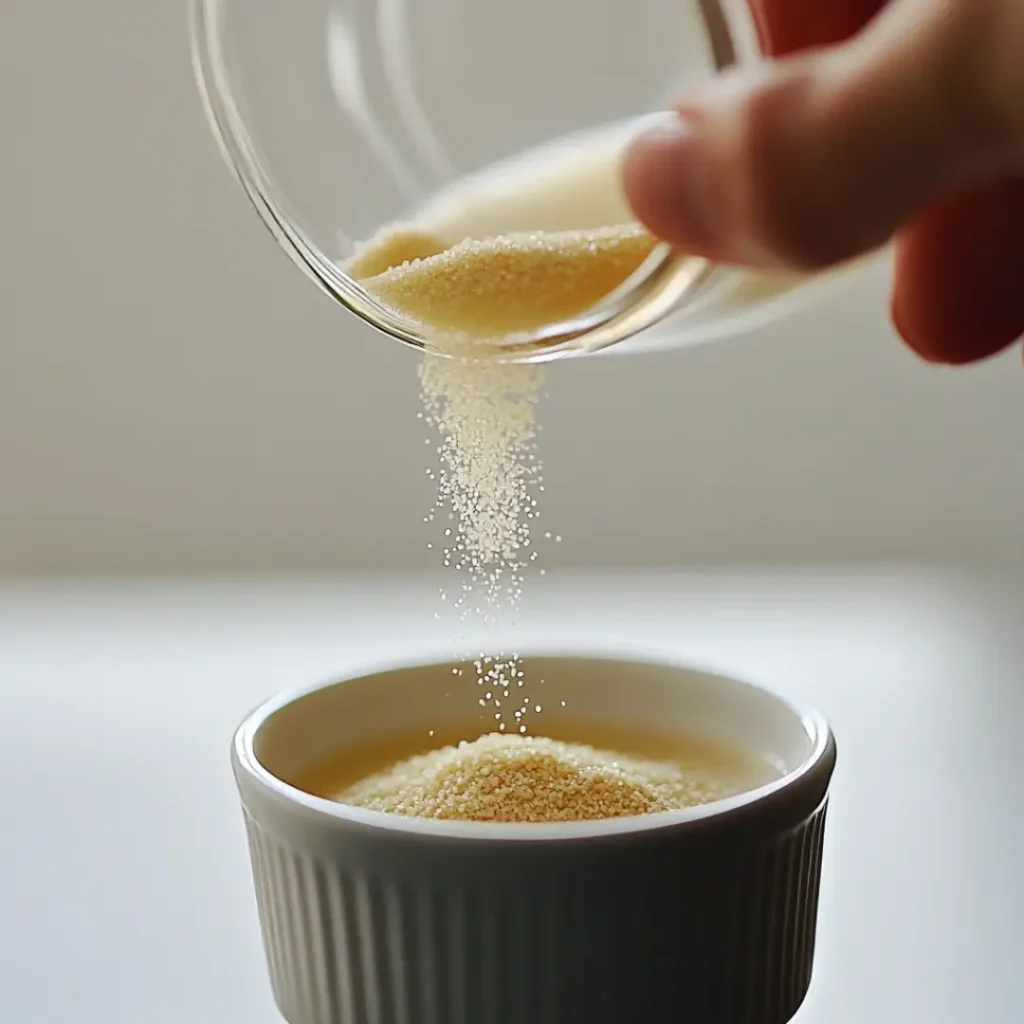
For recipes that require gelatin to be added to hot ingredients, it’s important to temper the mixture by gradually adding some of the warm liquid to the dissolved gelatin before mixing everything together. This prevents shocking the gelatin and forming lumps.
Blooming gelatin correctly is especially important in delicate desserts like mousses, panna cotta, and marshmallows, where achieving a smooth and stable texture is key. In the upcoming chocolate peppermint mousse cake, properly bloomed gelatin ensures the mousse layers hold their shape while remaining light and airy.
How Long Gelatin Powder Takes to Set
The setting time of gelatin powder depends on several factors, including the gelatin-to-liquid ratio, temperature, and additional ingredients in the recipe. In most cases, gelatin needs at least 4 to 6 hours in the refrigerator to fully set, but some recipes may require overnight chilling for the best results.
Several factors affect how long gelatin takes to firm up:
- Gelatin concentration – A higher ratio of gelatin to liquid results in a firmer set and faster setting time.
- Temperature – Gelatin sets more quickly in colder environments. If placed in the freezer for a short time, it may set faster, but freezing for too long can alter its texture.
- Type of liquid – Dairy-based recipes, such as mousse and panna cotta, may take longer to set compared to water-based gelatin desserts.
- Sugar and acidity levels – High sugar content can slightly slow down the setting process, while acidic ingredients like lemon juice or pineapple juice may weaken gelatin’s ability to firm up.
For best results, always refrigerate gelatin-based dishes in a flat, undisturbed space to ensure an even set. If the gelatin doesn’t firm up within the expected time, it could be due to incorrect blooming, too much liquid, or an ingredient that interferes with gelatin’s setting properties.
In the chocolate peppermint mousse cake, both mousse layers require several hours to set completely. Proper chilling ensures the layers hold their shape when sliced, creating a visually stunning and structurally stable dessert.
How to Use Gelatin Powder in Recipes
Gelatin powder is a key ingredient in both sweet and savory dishes, helping to create smooth textures, stabilize liquids, and add structure to various foods. Whether you’re making a silky mousse, a wobbly panna cotta, or chewy gummy candies, understanding the right way to use gelatin ensures the best results.
Steps for Using Gelatin Powder in Recipes
- Bloom the gelatin – Sprinkle gelatin powder over cold liquid (water, milk, or juice) and let it sit for 5 to 10 minutes until it absorbs the moisture and forms a gel-like texture.
- Dissolve the gelatin – Gently heat the bloomed gelatin over low heat, stirring constantly until it fully dissolves. Avoid boiling, as high temperatures can destroy gelatin’s gelling ability.
- Incorporate into the recipe – Gradually mix the dissolved gelatin into the remaining ingredients. If the recipe contains hot ingredients, temper the gelatin by adding a small amount of the warm liquid before mixing everything together.
- Chill and set – Transfer the mixture to a mold, dish, or pan and refrigerate for at least 4 to 6 hours until fully set.
Popular Uses of Gelatin Powder
- Gelatin for baking – Adds stability to mousses, tarts, and cheesecakes.
- Thickening soups and broths – Creates a rich, silky texture in consommés and sauces.
- Gelatin for jams and jellies – Helps fruit preserves hold their shape.
- Making gummy candies – Provides the perfect chewy consistency.
- Stabilizing whipped cream – Prevents whipped cream from deflating too quickly.
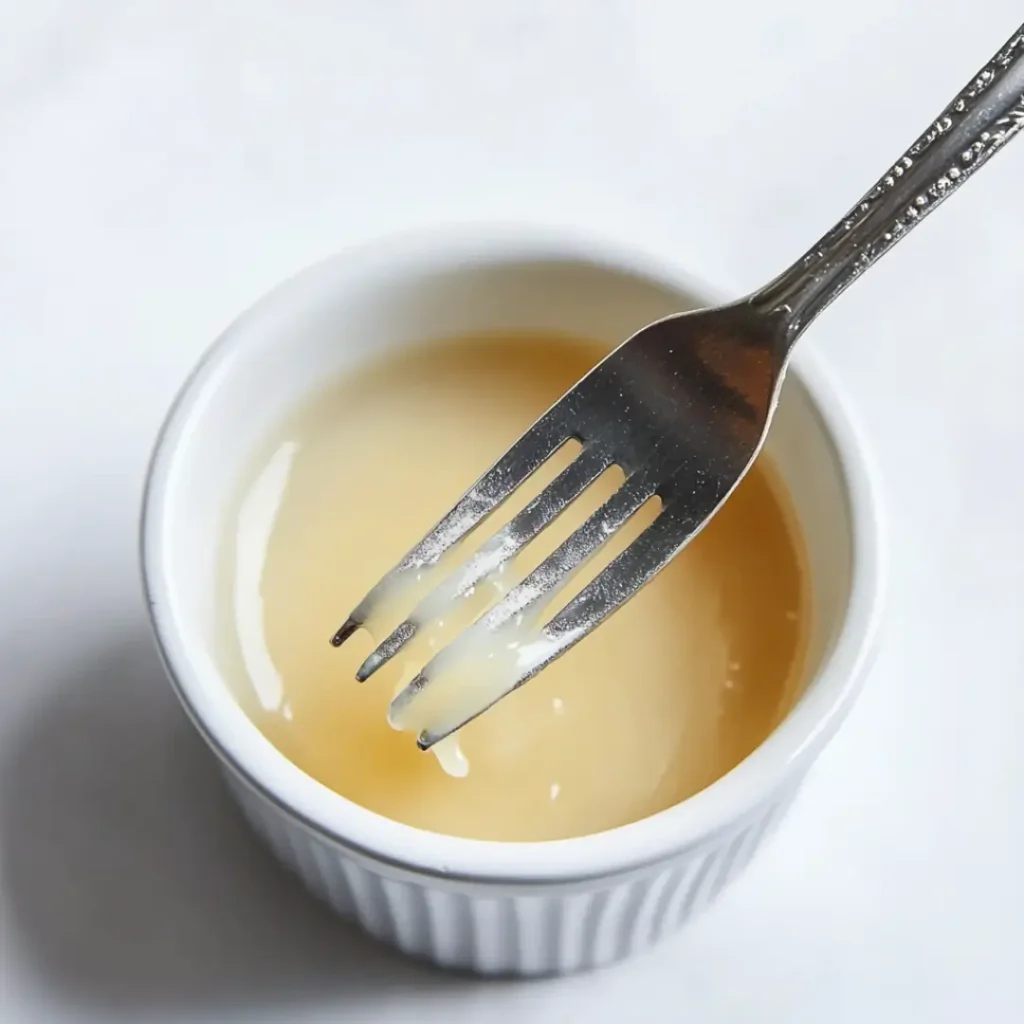
Gelatin plays a crucial role in the chocolate peppermint mousse cake, ensuring the mousse layers hold their shape while maintaining a soft, airy texture. Without gelatin, the mousse might collapse, making it difficult to slice and serve.
Recipes That Use Gelatin Powder
Gelatin powder is a must-have ingredient for a wide range of recipes, from light and creamy desserts to chewy candies and even savory dishes. It enhances texture, stability, and presentation, making it an essential tool for both home cooks and professional bakers.
Chocolate Peppermint Mousse Cake with Gelatin Powder
One of the best examples of using gelatin powder in desserts is the chocolate peppermint mousse cake. This festive treat consists of a chocolate sponge base, two layers of mousse—one rich chocolate and the other refreshing peppermint—and a decorative peppermint bark topping. Gelatin is used in both mousse layers to ensure they set properly while remaining smooth and airy.
Ingredients
Cake Layer:
- All-purpose flour
- Sugar
- Cocoa powder
- Baking soda
- Baking powder
- Salt
- Cornstarch
- Egg
- Milk
- Vegetable oil
- Vanilla extract
Chocolate Mousse Layer:
- Bittersweet chocolate (70%)
- Butter
- Water
- Gelatin powder
- Heavy whipping cream
Peppermint Mousse Layer:
- Egg yolks
- Whipping cream
- Whole milk
- Sugar
- Water
- Gelatin powder
- Peppermint extract
Decoration:
- Peppermint bark
Preparation Steps
- Cake Layer: Combine the dry and wet ingredients separately, then mix them together. Bake at 350°F for 20–22 minutes, then let it cool completely.
- Chocolate Mousse: Melt the chocolate with butter and water over simmering heat. Bloom gelatin powder by sprinkling it over cold water and letting it sit for 10 minutes, then heat gently to dissolve. Fold the gelatin into the melted chocolate and mix with whipped cream. Spread over the cooled cake layer.
- Peppermint Mousse: Heat the milk, sugar, and cream to create a custard. Temper the egg yolks by gradually adding the warm milk. Bloom and dissolve gelatin before mixing it into the custard. Whip cream and fold it into the mixture, then pour over the chocolate mousse layer.
- Chilling and Assembly: Refrigerate for at least 4 hours until fully set. Once firm, carefully remove the cake from the pan, smooth the edges with a straight spatula, and top with peppermint bark before serving.
Other Popular Recipes Using Gelatin Powder
- Panna Cotta – A creamy, custard-like dessert that sets with gelatin instead of eggs.
- Mousse – Helps create a light and airy texture while keeping the shape intact.
- Homemade Marshmallows – Gives them their signature chewy texture.
- Gummy Bears – Provides a firm, chewy consistency in homemade candies.
- Savory Aspics and Meat Glazes – Used to thicken and set flavorful meat-based dishes.
Gelatin powder is what makes these recipes possible by stabilizing textures and ensuring they hold their shape. In the chocolate peppermint mousse cake, it plays a crucial role in keeping the mousse layers firm yet soft enough to melt in your mouth.
Common Problems When Using Gelatin Powder and How to Fix Them
Working with gelatin powder can be tricky, especially if it doesn’t set as expected. Here are some common issues and solutions to ensure perfect results in every recipe.
Why Is My Gelatin Powder Not Setting?
- Too much liquid – Using too much liquid weakens the gel structure. Stick to the recommended gelatin-to-liquid ratio for your desired firmness.
- Not enough gelatin – If the recipe calls for a firm set, increase the amount of gelatin slightly.
- Acidic ingredients – Citrus juices, pineapple, and kiwi contain enzymes that break down gelatin, preventing it from setting. Use canned versions or cook fresh juice before adding gelatin.
- Overheating – Boiling gelatin destroys its gelling ability. Always dissolve it over low heat.
How to Fix Watery Gelatin
- Reheat the mixture gently and dissolve additional bloomed gelatin into it before chilling again.
Why Is My Gelatin Powder Clumping?
- Sprinkling gelatin in a pile rather than evenly over the liquid causes clumps. Always distribute gelatin powder in a thin layer over cold liquid.
- Stir gently while dissolving; do not whisk aggressively, as this can introduce bubbles.
Why Does My Gelatin Dessert Feel Rubbery?
- Using too much gelatin can make the texture too firm. Reduce the amount slightly for a softer consistency.
Nutritional and Health Benefits of Gelatin Powder
Gelatin powder isn’t just for cooking—it also provides several health benefits, making it a valuable addition to a balanced diet.
Supports Gut Health
Gelatin contains glycine, an amino acid that helps repair the digestive lining, making it beneficial for gut health and digestion.
Strengthens Joints and Bones
Since gelatin is derived from collagen, it supports joint mobility, cartilage health, and bone strength. Many people take gelatin supplements to help with joint pain and arthritis.
Improves Skin, Hair, and Nails
The collagen in gelatin contributes to skin elasticity, hair growth, and stronger nails. Regular consumption can promote youthful skin and reduce signs of aging.
Supports Weight Loss and Satiety
Gelatin is high in protein and low in calories, helping to promote fullness and reduce appetite. It’s often included in weight-loss-friendly recipes.
Including gelatin-rich foods like bone broth, homemade gummies, and mousse desserts is an easy way to add these benefits to your diet.
How to Store Gelatin Powder and Its Shelf Life
Proper storage ensures that gelatin powder remains effective for a long time.
Does Gelatin Powder Expire?
Gelatin powder has a long shelf life, but its gelling ability can weaken over time if exposed to moisture or air.
Storage Tips
- Keep gelatin in an airtight container in a cool, dry place.
- Avoid exposing it to humidity, which can cause clumping.
- If stored properly, gelatin powder can last for years, but always check for changes in texture or smell before using.
If gelatin has absorbed moisture or developed an off odor, it’s best to discard it and use a fresh batch.
Best Substitutes for Gelatin Powder
For those looking for plant-based or alternative options, several substitutes can replace gelatin powder, though they behave differently.
Agar Agar vs. Gelatin Powder
- A seaweed-derived alternative that sets firmer than gelatin.
- Works well in panna cotta, jellies, and gummy candies, but does not melt in the mouth like gelatin.
Pectin vs. Gelatin Powder
- A fruit-derived thickener used for jams and jellies.
- Does not create a firm gel but works well for spreads and fruit-based desserts.
Xanthan Gum vs. Gelatin Powder
- Used more as a thickener rather than a setting agent.
- Best for soups, sauces, and gluten-free baking.
Arrowroot and Carrageenan
- Work as natural thickeners in certain recipes.
- Less effective for achieving a true gel texture like gelatin.
Choosing the right substitute depends on the recipe, as some alternatives may not provide the same structure as gelatin powder.
Printable Instructions: How to Use Gelatin Powder
For quick reference, here’s a step-by-step guide on how to properly use gelatin powder in any recipe.
How to Bloom and Dissolve Gelatin Powder
- Sprinkle gelatin powder evenly over cold water (¼ cup of cold liquid per 1 tablespoon of gelatin).
- Let it sit for 5–10 minutes until it absorbs the liquid and becomes thick.
- Gently heat the bloomed gelatin over low heat, stirring until fully dissolved.
- Incorporate into the recipe by tempering with warm ingredients if needed.
- Chill for at least 4–6 hours to allow the gelatin to set properly.
Following these steps ensures smooth, lump-free gelatin every time.
Print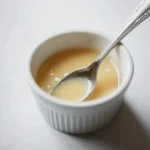
How to Use Gelatin Powder
- Total Time: 15 minutes
- Yield: Varies by recipe
Description
Master the art of using gelatin powder in your kitchen with this complete guide. Learn how to bloom, dissolve, and incorporate it into your favorite recipes without mistakes.
Ingredients
- 1 tablespoon gelatin powder
- 1/4 cup cold water
- Additional liquid as required (milk, juice, broth, etc.)
Instructions
- Sprinkle gelatin powder evenly over cold water in a bowl.
- Let it sit undisturbed for 5-10 minutes until it absorbs the liquid and swells.
- Heat gently over low heat, stirring constantly, until fully dissolved. Avoid boiling.
- Incorporate into your recipe, ensuring even distribution.
- Refrigerate for at least 4-6 hours to allow the gelatin to set properly.
Notes
For best results, always bloom gelatin before using it. Avoid overheating, as this can destroy its gelling properties.
- Prep Time: 10 minutes
- Cook Time: 5 minutes
- Category: Cooking Tips
- Method: Dissolving & Blooming
- Cuisine: Universal
Nutrition
- Serving Size: Varies
- Calories: 5
- Sugar: 0g
- Sodium: 10mg
- Fat: 0g
- Saturated Fat: 0g
- Unsaturated Fat: 0g
- Trans Fat: 0g
- Carbohydrates: 0g
- Fiber: 0g
- Protein: 1g
- Cholesterol: 0mg
Keywords: gelatin, how to use gelatin, blooming gelatin, setting gelatin, cooking tips
Final Thoughts on Gelatin Powder
Gelatin powder is an essential ingredient for creating beautifully textured desserts, stabilizing liquids, and even adding health benefits to your diet. Whether you’re making a festive chocolate peppermint mousse cake, homemade marshmallows, or rich broths, knowing how to properly use and troubleshoot gelatin will take your cooking skills to the next level.
For more inspiration, check out these related recipes:
- Enhance your gelatin-based desserts with these delicious Amarena cherries in syrup baking recipes.
- Gelatin powder can help create rich, flavorful broths, perfect for making vegetarian soup dumplings.
- For a luxurious, restaurant-quality dish, try incorporating gelatin into the sauce for this savory beef tenderloin medallions recipe.
Mastering gelatin powder will open up endless possibilities in the kitchen, allowing you to create desserts and dishes with the perfect texture every time.
For more creative baking inspiration and marketing ideas, explore the Pinterest or connect with us on Facebook.
- What is Gelatin Powder
- How Gelatin Powder Works in Recipes
- How to Bloom Gelatin Powder Properly
- How Long Gelatin Powder Takes to Set
- How to Use Gelatin Powder in Recipes
- Recipes That Use Gelatin Powder
- Common Problems When Using Gelatin Powder and How to Fix Them
- Nutritional and Health Benefits of Gelatin Powder
- How to Store Gelatin Powder and Its Shelf Life
- Best Substitutes for Gelatin Powder
- Printable Instructions: How to Use Gelatin Powder
- Final Thoughts on Gelatin Powder
